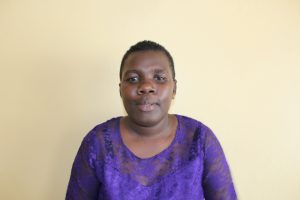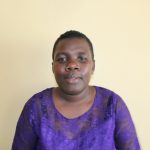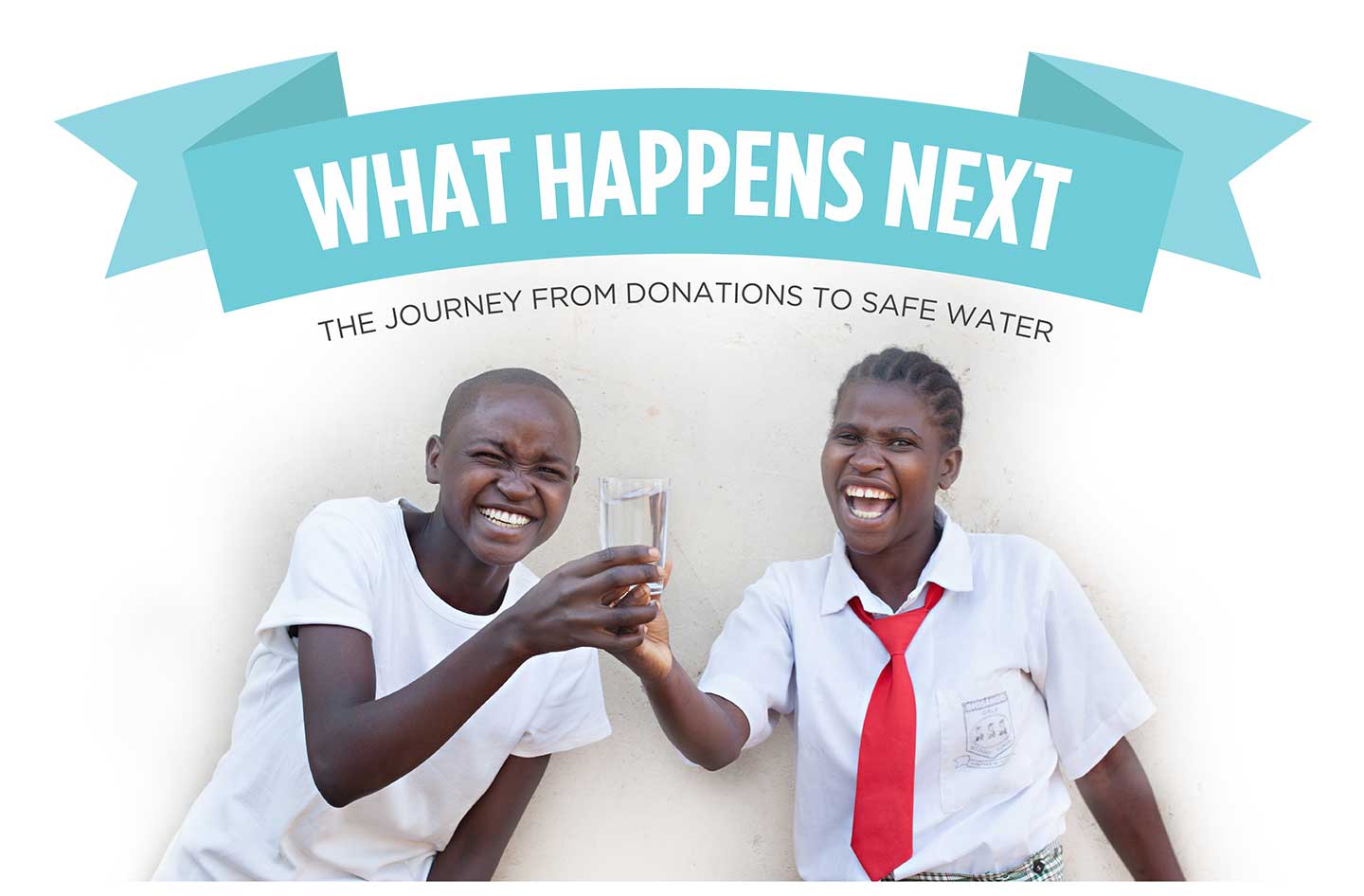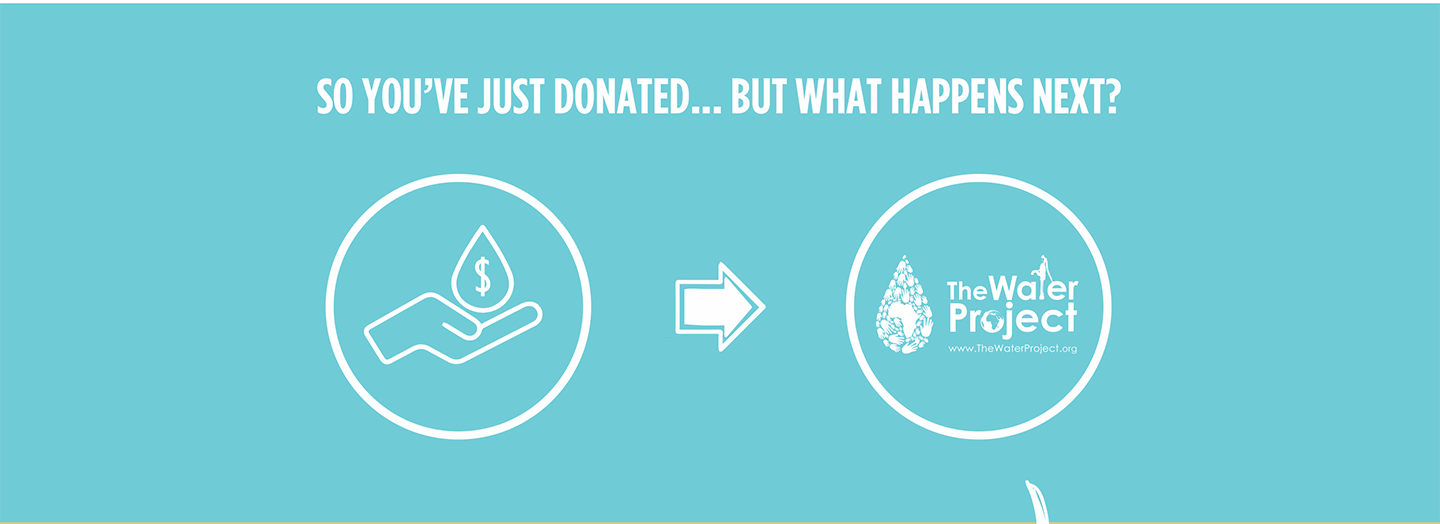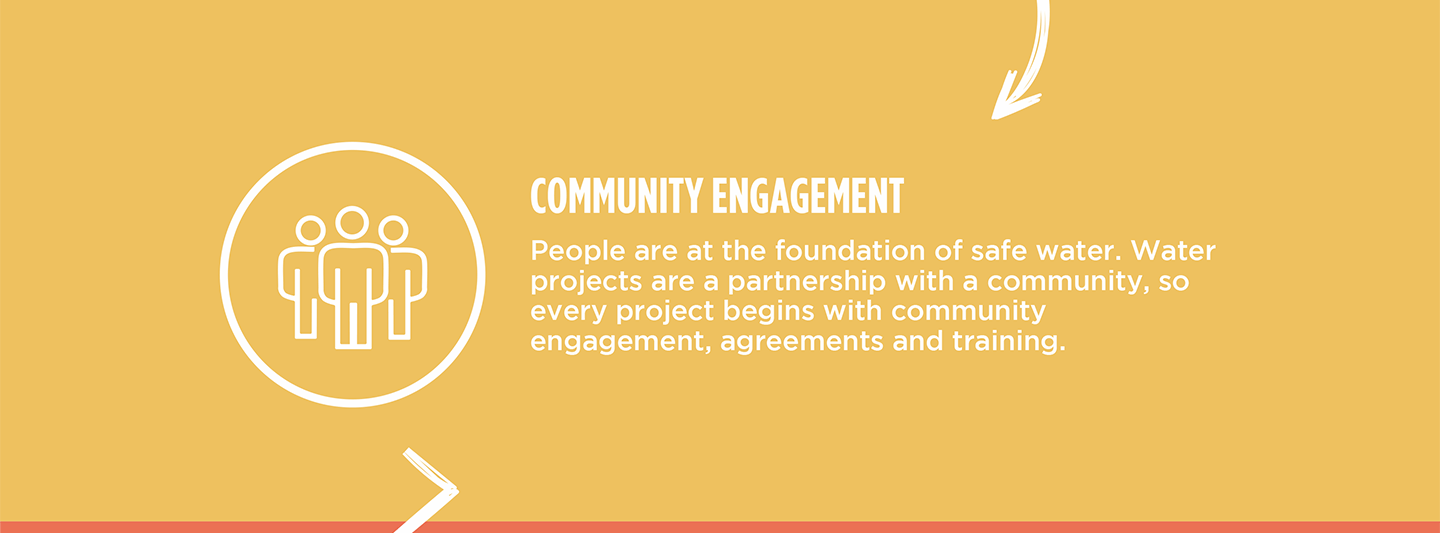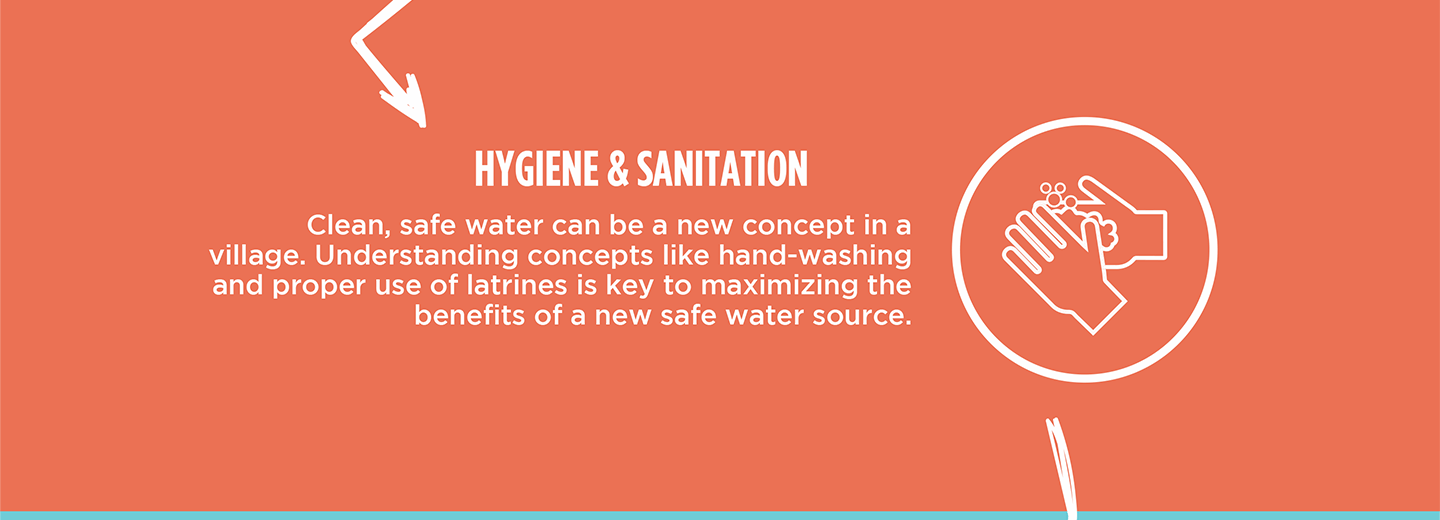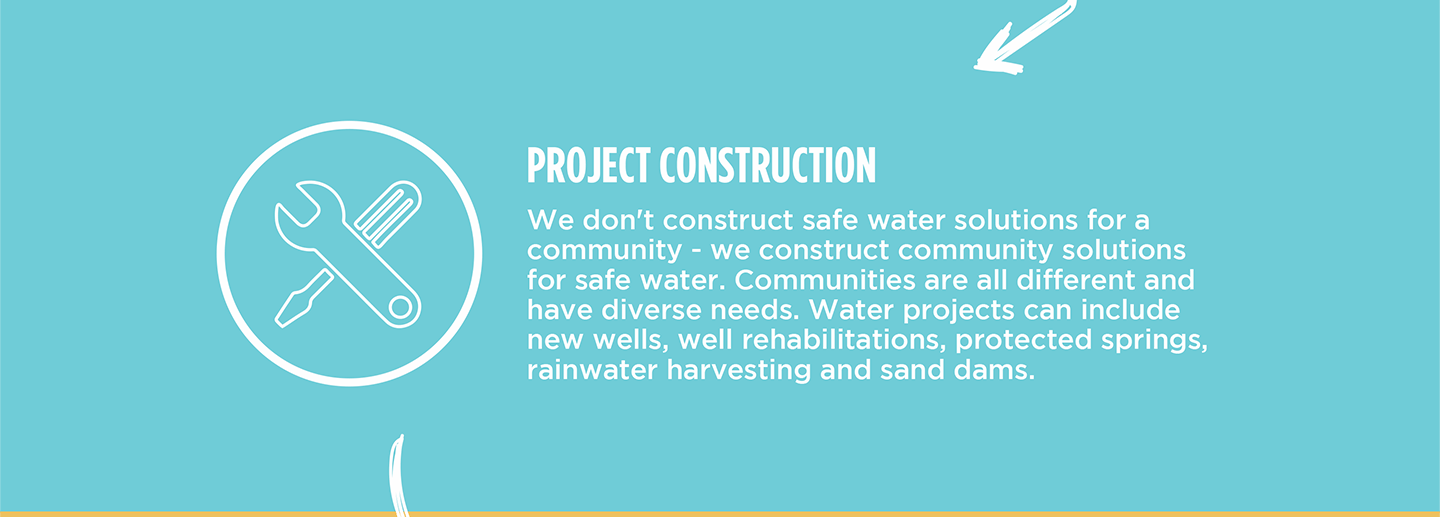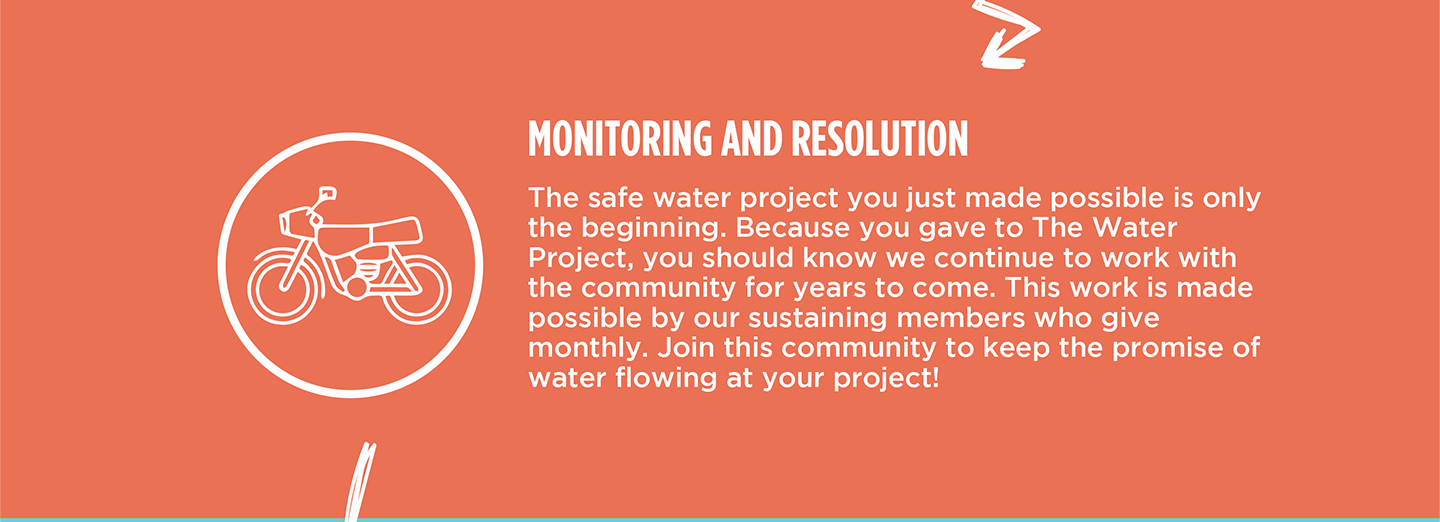The Lukume Primary School has an incredible 687 students and 20 staff members who struggle daily because water is scarce and the sources they have access to are unreliable.
This school has access to a few water sources, but they all have more problems than they can solve. The community and school both use a distant spring, which is in poor shape, contaminated, and very overcrowded.

The overcrowded spring.
"The main water source is shared with community members, so when students go to fetch water without being accompanied by a teacher, [they] are being harassed by community members to wait until they finished to collect water before students are allowed. This takes a lot of time. During [the] dry season, the spring discharge reduces where one can even take more than thirty minutes before getting water," shared Field Officer Stella Inganji.
They have a small amount of water piped into the school, but access is unreliable, and when it comes, it must be rationed. Their only other option is rainwater, which they harvest from a collection tank, but in this region, rain is limited.

With so many students, they simply can't keep up with the high demand for water. The time spent scrounging for water eats up crucial classroom time, limiting student's possibilities.
14-year-old student Bratoline has experienced the water crisis for too long. He doesn't enjoy visiting the spring and regrets the time wasted, which he would rather be using learning.
"The place is bushy [and] breeds dangerous animals and insects that can harm us," shared Bratoline.

Bratoline.
"[The] waterpoint is broken, so it is discharging water at [a] very low discharge [rate], which makes us wait for some time. It interferes with our lessons; definitely, we fail to complete the syllabus, and [that] leads to poor results," he continued.
Bratoline tells the story of every student at Lukume Primary School.
We asked him how he felt about having to search for water. "It is tiresome work, but because we also need water for drinking and cleaning our classrooms, going to fetch water has become our routine and fun."
Bratoline and the other students have made the best of their current crisis, but it's draining.

Bratoline carrying water.
"My dream in [the] future is to become an engineer, where I will be able to support my community by piping water to their homestead so that they don't suffer walking long distances in search of clean water," said Bratoline.
He also has plans to play! We asked what he would do if he didn't spend all his time fetching water. Bratoline said, "We will make use of the time doing [soccer] practices at the field because most of the time [when] we go to fetch water is games time or break time."

Students hiking uphill for water.
A well on campus will be life-changing for Bratoline, the other students, and the staff members. As Bratoline shared, he's got big plans. With clean water access, he can pursue those dreams!
Steps Toward a Solution
Our technical experts worked with the local community to identify the most effective solution to their water crisis. They decided to drill a borehole well, construct a platform for the well, and attach a hand pump.
Well
Abundant water often lies just beneath our feet. Aquifers—natural underground rivers—flow through layers of sediment and rock, offering a constant supply of safe water. A borehole well is drilled deep into the earth to access this naturally filtered and protected water. We penetrate meters, sometimes even hundreds of meters, of soil, silt, rock, and more to reach the water underground. Once found, we construct a platform for the well and attach a hand pump. The community gains a safe, enclosed water source capable of providing approximately five gallons of water per minute. Learn more here!
Handwashing Stations
Alongside each water source, we install two gravity-fed handwashing stations, enabling everyone at the school to wash their hands. Handwashing is crucial for preventing water-related illnesses within the school and community. Student “health clubs” maintain the stations, fill them with water, and supply them with soap, which we often teach them how to make.
Latrines
We will construct two Ventilated Improved Pit (VIP) latrine blocks designed to prevent fecal disease transmission. Each latrine features a cement floor, making it easy to use and clean regularly. Three stalls will serve the girls, and three will serve the boys.
School Education & Ownership
Hygiene and sanitation training are integral to our water projects. Training is tailored to each school's specific needs and includes key topics such as proper water handling, improved hygiene practices, disease transmission prevention, and care of the new water point.
To ensure a lasting impact, we support forming a student health club composed of elected student representatives and a teacher. These clubs promote hygiene practices schoolwide and keep handwashing stations well-stocked. This student-led model encourages a sense of ownership and responsibility.
Safe water and improved hygiene habits foster a healthier future for everyone in the school and the surrounding community.

 Borehole Well and Hand Pump
Borehole Well and Hand Pump
 Rehabilitation Project
Rehabilitation Project












